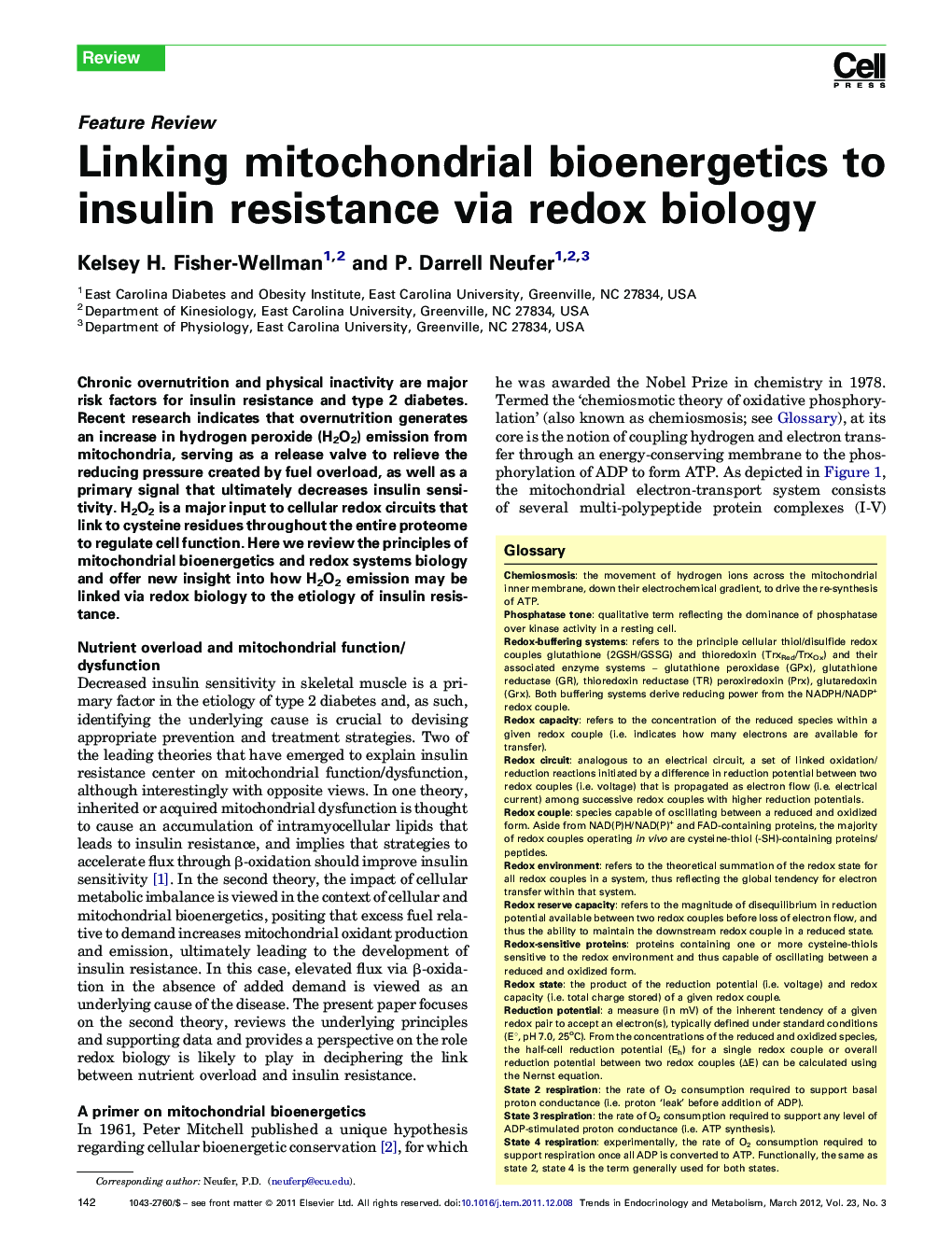| Article ID | Journal | Published Year | Pages | File Type |
|---|---|---|---|---|
| 2810912 | Trends in Endocrinology & Metabolism | 2012 | 12 Pages |
Abstract
Chronic overnutrition and physical inactivity are major risk factors for insulin resistance and type 2 diabetes. Recent research indicates that overnutrition generates an increase in hydrogen peroxide (H2O2) emission from mitochondria, serving as a release valve to relieve the reducing pressure created by fuel overload, as well as a primary signal that ultimately decreases insulin sensitivity. H2O2 is a major input to cellular redox circuits that link to cysteine residues throughout the entire proteome to regulate cell function. Here we review the principles of mitochondrial bioenergetics and redox systems biology and offer new insight into how H2O2 emission may be linked via redox biology to the etiology of insulin resistance.
Related Topics
Life Sciences
Biochemistry, Genetics and Molecular Biology
Endocrinology
Authors
Kelsey H. Fisher-Wellman, P. Darrell Neufer,
